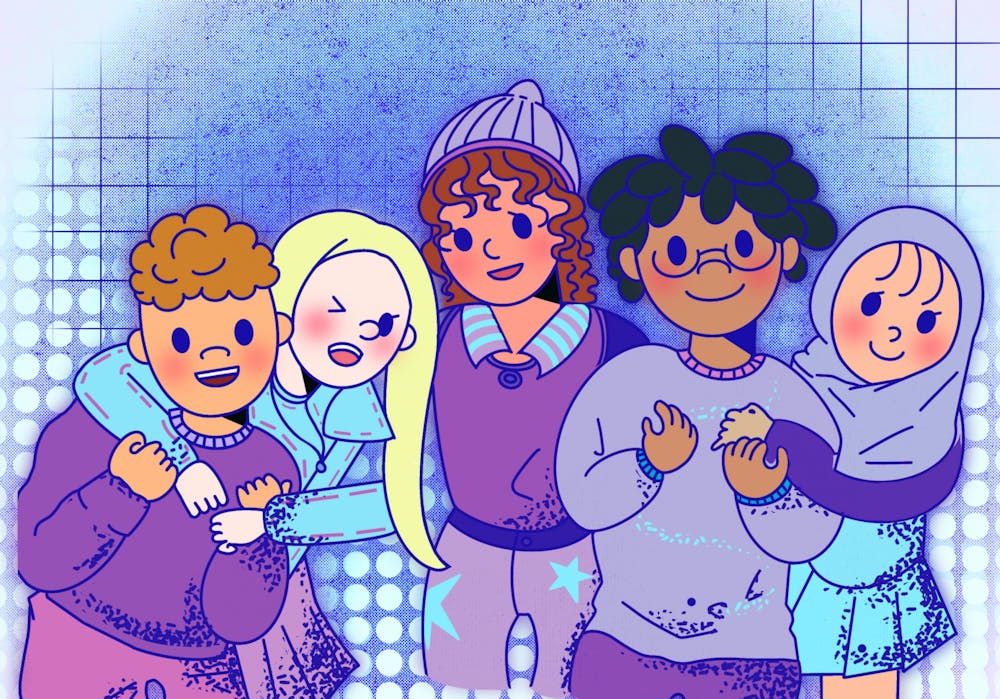Though it has not always been this way, the United States today prides itself on its diversity, and political and public actors from across the political spectrum have often cited it as one of our nation’s greatest strengths. There is no doubt that we live in a time when the U.S. is more diverse than ever before, and this trend shows no signs of slowing. As the Census Bureau projects the existence of a “majority minority” state in just over two decades, Americans are already experiencing the implications of such a shift — and with this has come increased attention to the purported “self-segregation problem,” most notably on college campuses, including the University.
Self-segregation is loosely defined as the separation between groups, often along racial or ethnic lines, formed by the groups themselves rather than imposed upon them by an overarching entity. In short, self-segregation can be used to explain the rarity of interracial friendships, or the quantity of friend groups comprised of individuals from the same race. It provides context for the divide between members of different races, and the subsequent lack of understanding and even racial animosity that is generated by this disconnect. Self-segregation has become a subject of particular contention in recent years, especially in academic contexts. Given that college campuses are seen as an ideal place to intermingle and encounter diversity firsthand, it can be concerning to instead see the creation of these monoracial circles. As the U.S. struggles to determine how it should address an increasingly diversifying nation — or if it should address it at all — self-segregation has, at the very least, been identified by some as an issue in need of rectification.
But with this rhetoric of the “self-segregation problem” comes another, perhaps more troubling idea — the blame that is all-too-often placed on members of marginalized communities for not reaching out to their white counterparts. Even the term “self-segregation” deliberately associates the friendships and social connections forged between minorities with a dark period of legalized oppression. That is not to say that it is necessarily the responsibility of white people to reach out and befriend minorities solely on the basis of their race. But there is the implication that self-segregation is not the fault of whites or institutionalized divides, but of minorities — that they are not “trying hard enough” to assimilate into a dominant culture that primarily reflects the customs and beliefs of white Americans.
Cultural organizations on Grounds — and, by extension, minority groups — face the brunt of these accusations. Critics argue that they promote self-segregation, which isolates individuals from new experiences and viewpoints. But these arguments often do not touch on the conditions that necessitate the existence of cultural organizations in the first place — namely, the desire for a sense of belonging in an environment where minorities may otherwise feel uncomfortable or out of place. Some may retort that college is supposed to make you feel uncomfortable, but the discomfort caused by being in a foreign environment is far different from the hyper-awareness of one’s racial or ethnic identity. Whereas the first is to be expected, the latter is a symptom of a larger issue that pervades the culture of college life — the whiteness of academic spaces.
College is a valuable tool of exposure for individuals who may have grown up in a monolithic community. But they too — like many other institutions — are often visibly divided along racial, ethnic and religious lines. The University itself is no exception. With regards to racial-ethnic diversity, the University is rated above average in comparison to other schools, with 56.6 percent of the student body identifying as white. Though this breakdown is a positive development, the diversity touted by the University may not always be so apparent from the perspective of an average student. Students congregate over similarities and are less inclined to meet those they share nothing in common with. This is less of an attack on these individuals, however, than a general comment on human nature. Social tensions have been attributed to the lack of interracial, perfectly diversified friendships — but the best way to address tensions stems from communication between groups, not the elimination of them altogether.
No one is disputing that diversity is a good thing, and that diversification should be encouraged. There is a value in engaging with a diversity of perspectives, opinions and backgrounds that cannot be emulated elsewhere. Additionally, social segregation and economic stratification — in which social classes are separated, or stratified, along economic lines, which in turn perpetuates economic inequality — are problematic and deeply embedded within institutions and organizations within the University. But there is a huge difference between facilitating dialogues between people and working to address large-scale inequity, and lambasting individuals for wanting to be around those with whom they share common cultural or heritage-based traits. Self-segregation is not inherently a bad thing — ignorance of others’ backgrounds and hostility towards difference is.
Samantha Cynn is a Viewpoint Writer for The Cavalier Daily. She can be reached at opinion@cavalierdaily.com.
The opinions expressed in this column are not necessarily those of The Cavalier Daily. Columns represent the views of the authors alone.






